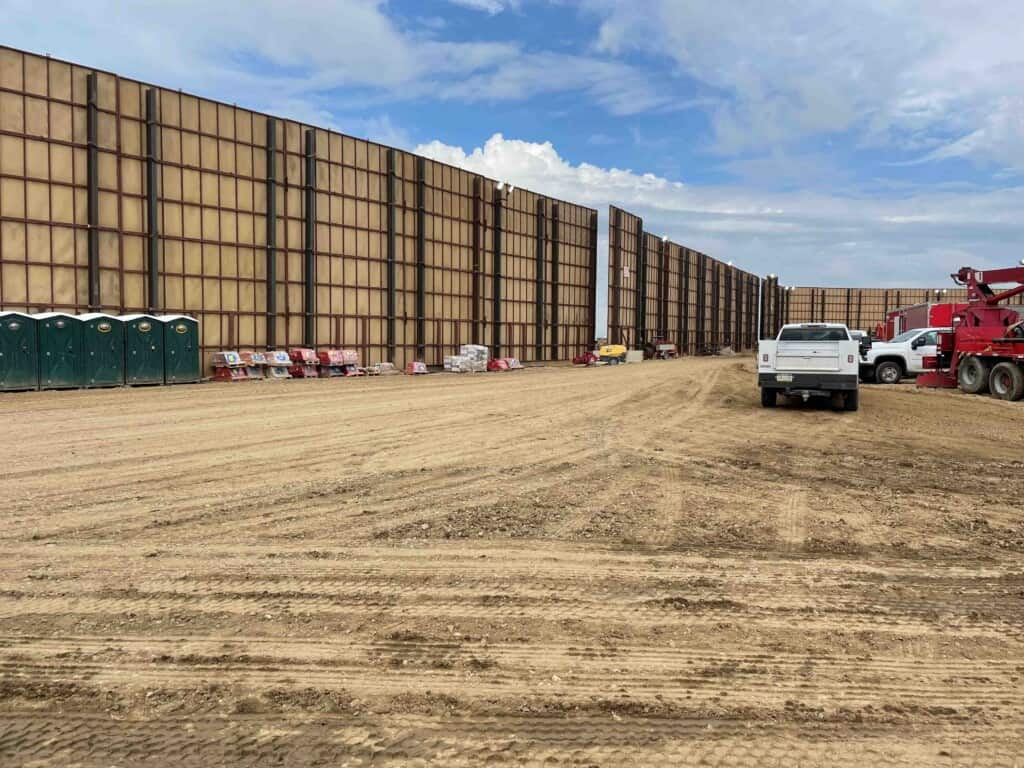Geothermal development activities in general terms are likely to be no different than any other industrial activity of equivalent scope. Noise levels are elevated during road construction, drilling and stimulation at well sites, and well testing. This quality of life concern exists for other well drilling activity, which is typically of high intensity and short duration. Noise from drill sites can be mitigated through the use of sound walls or barriers, a relatively standardized practice in many parts of the United States where industrial activity and residential neighborhoods are forced to co-exist.1Bear, J.C., and Jones, B.A., eds. (2023, May 1). Chapter 10: Environmental Considerations and Impact. The Future of Geothermal in Texas. p. 277. https://energy.utexas.edu/research/geothermal-texas In addition, electric operations (drilling rigs) reduce noise compared to diesel operations.

After the wells have been constructed and plants begin normal operations, components of the plant contribute to elevated ambient noise, including compressors, generators, motors, pumps, and fans. Noise also occurs during abnormal operations, such as when the plant is forced offline, or when/if emergencies occur that require adoption of measures that are not a typical part of standard operating procedures.2Bear, J.C., and Jones, B.A., eds. (2023, May 1). Chapter 10: Environmental Considerations and Impact. The Future of Geothermal in Texas. p. 277. https://energy.utexas.edu/research/geothermal-texas
A number of noise pollution concerns related to geothermal development can be mitigated with good engineering and best environmental practices. Noise may occur from fluid handling, especially for venting or fluid release to manage pressure. Noise pollution can be reduced using strategies such as subwater release (for example, into a storage pond). Additional approaches for noise management include the use of silencers, which are vertically oriented pipes that increase in diameter with height.3Bear, J.C., and Jones, B.A., eds. (2023, May 1). Chapter 10: Environmental Considerations and Impact. The Future of Geothermal in Texas. p. 277. https://energy.utexas.edu/research/geothermal-texas
Environmental Concerns: Conventional vs Unconventional Geothermal Development
Observations on environmental concerns have been made in the context of conventional hydrothermal geothermal development, which will likely be a small part of geothermal development in states, such as Texas, where Enhanced Geothermal Systems will be the predominant targets. With the development of next generation geothermal concepts in Texas, many of the environmental externalities that have been observed to be associated with conventional hydrothermal geothermal operations are not expected to be of concern. This is an area where further inquiry is needed, as the first plants piloting next generation concepts come online in the coming years.4Bear, J.C., and Jones, B.A., eds. (2023, May 1). Chapter 10: Environmental Considerations and Impact. The Future of Geothermal in Texas. p. 277. https://energy.utexas.edu/research/geothermal-texas
Image Credits
- Sound barrier at a frac site in the DJ Basin, CO: Hilary Olson